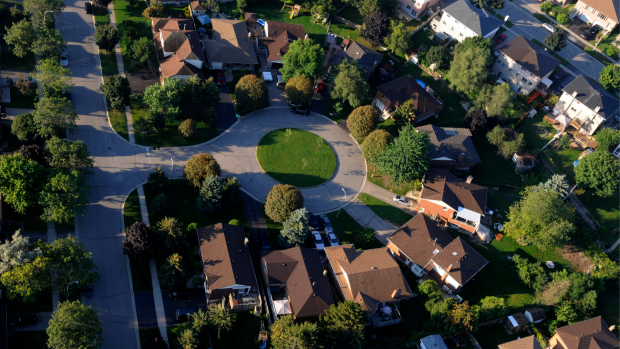New Jersey Future Blog
Single-Family Zoning: An Idea Whose Time Has Passed?
April 12th, 2021 by Tim Evans
 New Jersey is a home-rule state. Decision-making authority about land use and development—what kinds of buildings are allowed to be built where—rests with municipal governments, as long as they abide by environmental regulations and road safety standards that are set by state agencies. In particular, municipalities have the power to enact zoning codes that define the parts of town in which residential, commercial, industrial, and other land-use types will be permitted or prohibited.
New Jersey is a home-rule state. Decision-making authority about land use and development—what kinds of buildings are allowed to be built where—rests with municipal governments, as long as they abide by environmental regulations and road safety standards that are set by state agencies. In particular, municipalities have the power to enact zoning codes that define the parts of town in which residential, commercial, industrial, and other land-use types will be permitted or prohibited.
While zoning initially arose as a way to keep noxious land uses (factories and other businesses that create noise, odors, or pollution) away from neighborhoods where people live, it has evolved to include much more prescriptive rules as to what types of housing are permitted in what types of buildings and whether homes and non-polluting businesses are allowed to locate in the same neighborhood.
Fiscal zoning
In a practice known as fiscal zoning, municipalities often try to use their zoning power to favorably affect their balance sheet. Since school costs are typically the largest component of local government expenditures, and since most homes don’t come anywhere close to generating enough property tax revenue to offset the costs of educating whatever school-age children might live in them, many local leaders have concluded that the secret to keeping property taxes down is to limit the amount of residential development that happens in town. Instead, they seek to attract office parks, regional shopping centers, warehouses, hotels, and other land-use types that pay big property tax bills but don’t generate school kids. These incentives are sharpened by the fact that the units of competition (i.e. school districts) for the finite number of large revenue-generating land uses are so small; there are simply not enough malls and office parks for each of New Jersey’s nearly 600 school districts to host enough of them. Since the odds of scoring one of these property-tax cash cows are low, keeping out housing becomes the next best strategy for avoiding property tax hikes.
Single-family homes dominate
While municipalities cannot legally zone out residential development altogether, they have considerable leverage in laying out what types of housing they would like to see developed. This often means single-family detached homes, preferably on large lots. Zoning for this type of housing has two advantages from a fiscal standpoint:
- It minimizes the total number of housing units that can be built on a piece of land of a given size, and hence limits the number of potential new school children who might end up living on that land once it is developed.
- It ensures that the artificially-restricted number of homes that get built on that land will be expensive, as homebuilders seek to maximize their profit per unit, having been denied the option of earning less profit per unit but making it up in volume. More expensive homes work to the advantage of the municipality because their property tax bills will come closer to paying for any school children who live in the house than is the case for lower-valued units, especially attached housing like townhouses and apartment buildings.
Having made these calculations, many municipalities do their best to discourage multi-family housing, and the results show up in statewide data about housing variety. Nationally, 61% of all housing units are single-family detached. New Jersey’s rate is actually somewhat lower, at 53%, thanks to many parts of the state (the cities and older towns) having been built before the age of the automobile, when rowhouses and apartment buildings were much more common. But single-family detached is the default housing type even in most of New Jersey. The SF-detached percentage exceeds 80% in a full one-third of New Jersey’s municipalities (188 out of 565), and it exceeds the national percentage in 361 municipalities. In only 124 municipalities is more than half the housing stock something other than single-family detached.
Exclusionary zoning
A housing, taxation, and public education ecosystem that incentivizes the underproduction of housing in general, and that tends to produce mostly single-family detached housing when it does produce new units, will tend to put upward pressure on both home prices and rents, as supply fails to keep pace with demand. New Jersey’s median home value of $348,8001 is the seventh-highest in the nation, behind other notoriously expensive states Hawaii, California, Massachusetts, Colorado, Washington, and Oregon, and is nearly half again as high as the national median of $240,500. For renters, New Jersey is the fourth most expensive state; its median rent of $1,376 trails only Hawaii, California, and Maryland.
High-priced housing prevents households of modest means from being able to live in large swaths of the state. They are effectively excluded from towns with good schools and convenient access to job centers, which is why this practice is often referred to as “exclusionary zoning.” The failure to provide a variety of housing options that are affordable to a range of households amounts to de facto discrimination by income. Lower-income households are increasingly confined to the handful of cities and towns with older housing stocks that feature higher-density housing options. Concentrated poverty is on the rise in New Jersey over the last two decades, despite concerns about “gentrification” in some urban neighborhoods.
Whether incidental or intentional, geographic stratification by income often also results in segregation by race, since non-white households tend to have lower incomes than white households. In New Jersey, median household income for white households is $85,423; for Black households, it is $51,309; for Hispanic households, $54,160. New Jersey is one of the most segregated states in the country, despite being one of the most diverse states as measured by state-level statistics. Our reluctance to produce a wider variety of housing options in a wider variety of places ensures that the effects of past discriminatory housing practices, even though those practices have since been outlawed, continue to define the complexion of our residential landscape today.
Young adults priced out
In addition to inhibiting upward mobility for many non-white and lower-income households, exclusionary zoning also imperils the future of New Jersey’s economy by making the state prohibitively expensive for young adults entering the workforce and seeking to move out on their own. New Jersey has the highest rate among the 50 states of people aged 18 to 34 living with their parents—45%, well above the national rate of 34%. This situation is untenable; eventually, young people tire of bunking with parents, and if they can’t afford their own place in New Jersey, some will look elsewhere. This is likely a major reason that New Jersey has been losing so many Millennials (those born between 1981 and 2000, roughly) to other states. The fact that out-migrating Millennials have been gravitating to other metro areas that offer the kind of mixed-use, walkable communities they favor—something New Jersey also offers—suggests that many of them would seek these live-work-play communities closer to home if they weren’t so expensive.
Zoning reform
New Jersey is not the only place suffering from a housing market that can’t produce enough supply to meet demand—look again at the lists of states with higher home values or rents than New Jersey. But some of those places are now confronting the problem head-on. A growing number of states and cities are considering the possibility of abolishing residential zoning that permits nothing other than single-family detached housing, and a few individual places have actually taken the leap.
Strong Towns recently undertook an excellent review of where this movement is meeting with some success (“Will 2021 Be the Year Zoning Reform Reaches Critical Mass?”). The list includes some surprising places: City-level plans are addressing the issue in Atlanta and Charlotte (two Southern cities with histories of legally-enshrined segregation), and state-level legislation aimed at requiring local government to allow for greater diversity of housing options has been introduced in Utah, Connecticut, and New Hampshire, the latter two of which are similar to New Jersey in being carved up into many small fiefdoms that jealously guard their authority over land-use decisions.
In California, a state-level effort at requiring cities to allow higher housing density near transit stations failed last year, but legislators continue to advance various efforts to encourage more housing development by placing new restrictions or requirements on local governments’ zoning powers. A few individual California cities have pressed ahead with zoning reform on their own, including San Jose, Sacramento, and Berkeley. Tying single-family zoning back to residential segregation, the Strong Towns article cites Berkeley as a particularly noteworthy addition to the list of places that are rolling it back, given that the city was the first in the United States to adopt it, back in 1916. And while California has thus far failed to tackle single-family zoning statewide, it has loosened housing restrictions in a different way by relaxing rules around the creation of accessory dwelling units (ADUs), setting off what CityLab calls “a backyard apartment boom.”
Minneapolis went all the way in 2018 and abolished single-family zoning citywide, along with a few other changes designed to allow increased housing density. At the state level, the only clear success so far is Oregon (which ranks one slot above New Jersey among the states with the highest median home values). In 2019, Oregon passed a law that requires all cities of at least 25,000 population to allow two-, three-, and four-unit structures, as well as townhouses (“single-family attached” in Census Bureau parlance), in any neighborhood previously zoned only for single-family detached homes.
If the cumulative effects of New Jersey’s 565 individual municipalities making development decisions, many of which involve suppressing new residential development, are adding up to a suboptimal situation at the state level—namely, high housing prices and a shortage of the right kind of housing units in the right places—then perhaps the state government needs to take action in the interest of the economic health of the state as a whole. Ultimately, local governments’ power to regulate land development is delegated to them by the state, and the state has the power to reel some of that power back in if it is being used irresponsibly or in a way that is harming the state’s interests at the macro level. Oregon has pointed to what such action might look like, and although California’s failure (for now, at least) at the state level illustrates the difficulty involved, it was enough to start the conversation and to spur some individual cities to take action on their own. New Jersey should follow Oregon’s and California’s lead and take advantage of the growing national momentum toward zoning reform, to at least begin a discussion about how such reforms might work in New Jersey. Otherwise, high home prices and rents will likely continue to chase people out of the state.
1 As of the 2019 1-year American Community Survey
Related Posts
Tags: sing-family zoning, Zoning
















